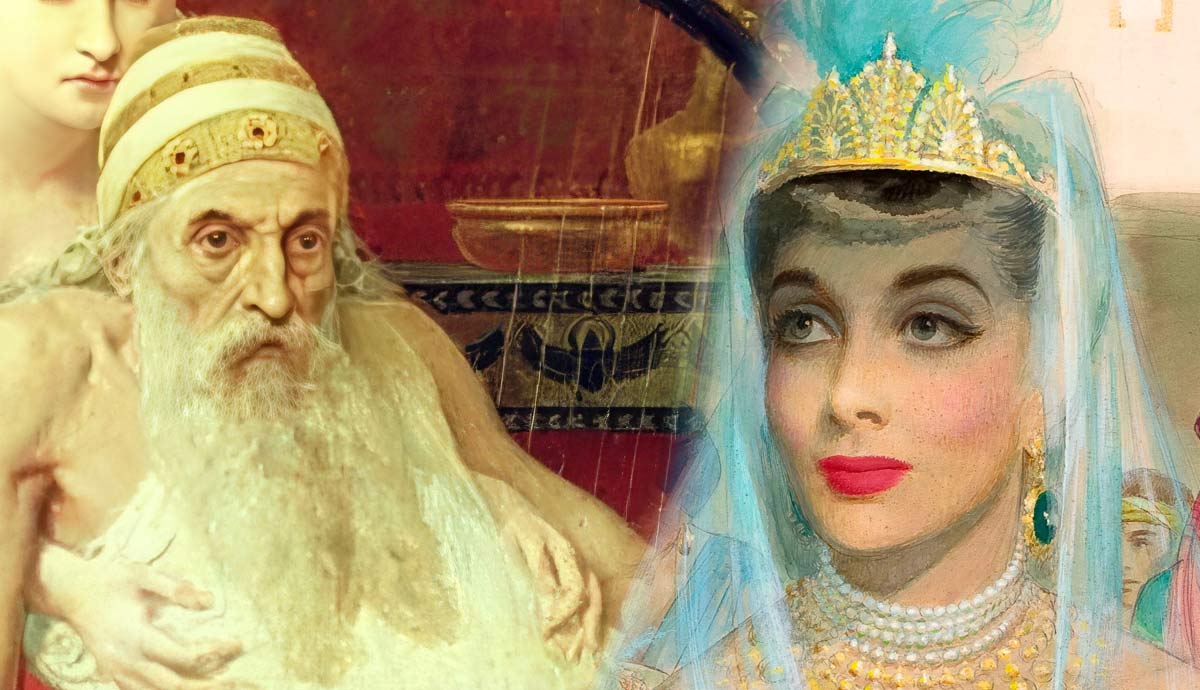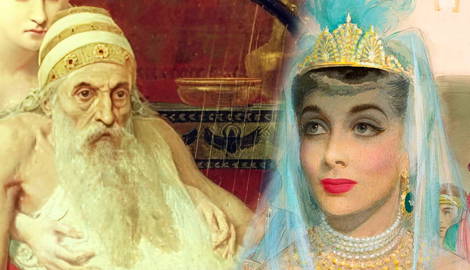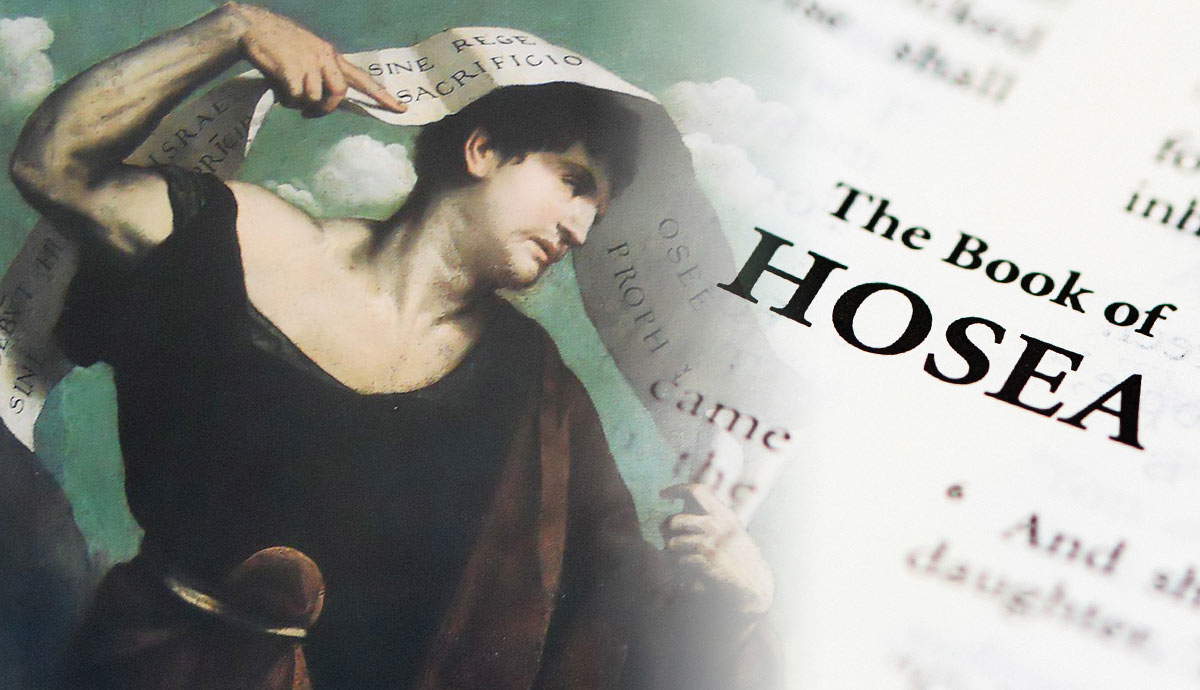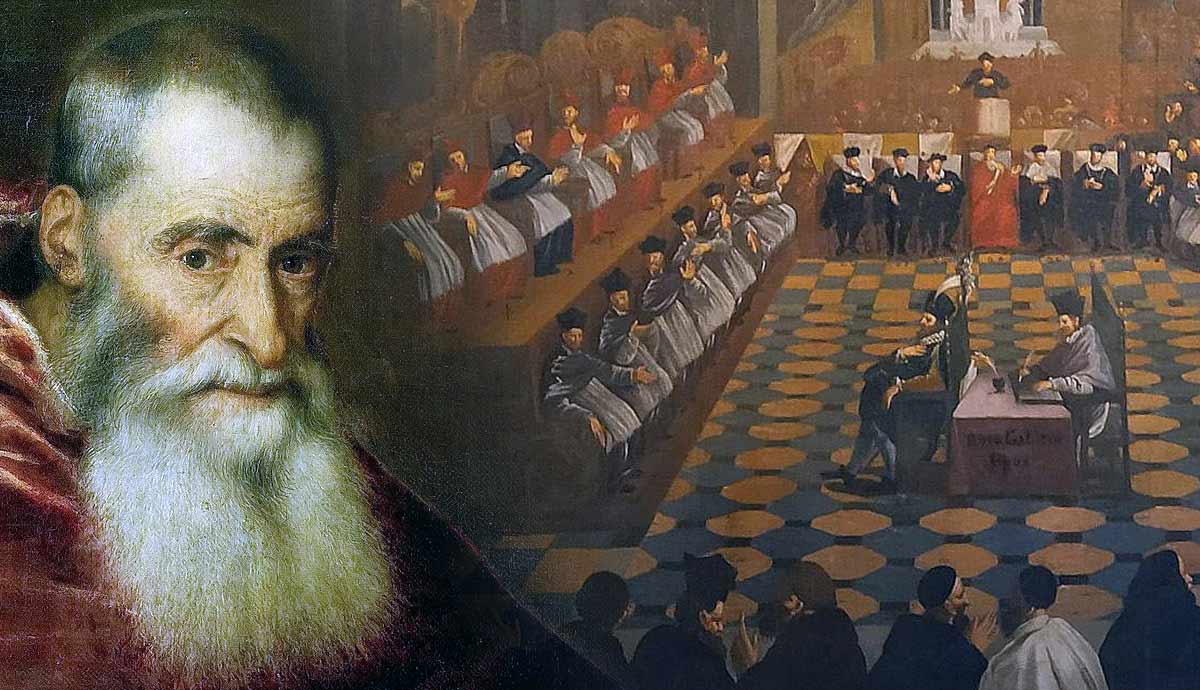
King Solomon pulled the ultimate biblical no-no: he married foreign women and allowed them to keep practicing their own religions. In his zeal to cement political alliances through marriage, he gained a reputation for faithlessness—and divine punishment soon followed. But who were these women? Their names and stories are often overshadowed by the grand narrative of Israel’s golden age, yet they played pivotal roles. These were the sisters and daughters of kings, women who likely wielded influence within Solomon’s vast harem and bore the heirs who would shape Israel’s future. Let’s take a closer look at the many wives and concubines of King Solomon.
Naamah, the First Wife

Naamah, Solomon’s first recorded wife, enters the scene as more than a mere footnote in history—she’s a trailblazer in the dizzying lineup of Solomon’s 700 wives. An Ammonite princess, Naamah’s marriage to Solomon was arranged while his father, King David, still held the throne. This alliance likely had diplomatic undertones, sealing bonds between Israel and Ammon, a neighboring kingdom. Yet, it also raised eyebrows since intermarriage with foreign nations was explicitly discouraged in Israelite law. Apparently, no one handed David or Solomon the memo.
Her name, meaning “pleasant” or “beautiful,” suggests she made an impression. While little is said about Naamah herself, her legacy looms large: she was the mother of Rehoboam, the heir to Solomon’s throne. Her status as Queen Mother placed her in a position of significant influence in a kingdom where lineage was everything. Still, isn’t it particularly interesting that, unlike Solomon’s own mother who was herself an Israelite, this, the mother of his heir, was clearly from another people?

Why would David sanction this controversial union? Some speculate it was a gesture of gratitude toward Naamah’s family. Her presumed father, Shobi, had supported David during his wilderness years, providing food and supplies when the chips were down. Whatever the reasoning, this union planted the seeds for political and theological complications.
Naamah’s Ammonite roots would later fuel criticism of Solomon’s unholy entanglements and his susceptibility to the gods of his many partners. Yet, she holds the distinction of being the only one of his wives explicitly named in the Hebrew Bible, the only one we need not go searching for through means of educated guesswork. Perhaps Naamah was not just a political pawn but a woman who left her mark on a kingdom grappling with the tension between diplomacy and faith-fueled isolation.
Abishag, Who Saw Courtly Drama

Abishag’s story is a fascinating mix of intrigue and ambiguity, as she literally was brought into the palace to be a bed warmer. A Shulamite virgin of exceptional beauty, she was given to King David in his twilight years to serve as his nurse and companion—a role that has led to endless speculation. While the text insists their relationship was platonic, her proximity to the king gave her a unique status.
After David’s death, Abishag’s name resurfaces in a power play involving Solomon’s older brother, Adonijah. When Adonijah requested Abishag as a wife, Solomon’s reaction was swift and brutal. He interpreted the request as a claim to the throne, given Abishag’s close ties to David. Solomon acted promptly and decisively. Adonijah’s execution suggests that Abishag was not just a former attendant meant to fade into obscurity after her usefulness was complete but someone with political significance—possibly even Solomon’s intended.
The text doesn’t explicitly say they married, but Solomon’s fierce protection of her suggests a deeper connection. Whether Abishag became one of his queens or remained in a nebulous role at court, her presence highlights the precarious balance of power in the early days of Solomon’s reign. She represents not just beauty and loyalty but the subtle ways women influenced the shifting dynamics of Israel’s messy royal family.

Why such a strong reaction? Some scholars theorize that Abishag may have become Solomon’s wife after David’s passing. The idea gains traction when we consider the Shulamite from the Song of Solomon. Could Abishag and the Shulamite be one and the same? Both are tied to rural life, both are described as breathtakingly beautiful, and both inspire a deep, almost reverential love. If true, this connection adds depth to Abishag’s story. She was not just a caretaker for a fading king; she might have been the muse for one of the most evocative love poems in history. It is a theory that can’t be proven, but it’s one that makes her tale all the more captivating.
It is easy to imagine it—a fading father, his son poised to take the throne and asking for advice, and the woman brought in to care for a king during his final days. In such a charged environment, is it really out of bounds to think that a romance may have sparked between the young beauty and the boy about to step into a new role as king?
Pharaoh’s Daughter

When it comes to Solomon’s wives, Pharaoh’s daughter stands out—not just for her royal pedigree but for what her marriage to Solomon symbolized. She wasn’t just any princess: she was Egyptian nobility, a diplomatic jackpot that cemented Israel’s rising status on the international stage. Scholars have debated which Pharaoh she might have been related to, with Thutmosis I or a ruler of the 21st Dynasty often floated as possibilities. She could have been the sister of Hatshepsut, herself a woman who shattered convention. Whoever her father was, this wasn’t just a marriage—it was a headline-grabbing alliance.
This wasn’t a simple love story, though. Pharaoh’s daughter didn’t just stroll into Jerusalem and make herself at home. Solomon went all out, building her a palace so she wouldn’t have to share quarters with his other wives or concubines. In doing this, Solomon set her apart with a clear message that this woman, this one wife among many, was special.

Like that of Naamah, this union wasn’t without its controversies. The Torah was pretty clear about not intermarrying with foreign nations to avoid the influence of their gods. Let’s be real—an Egyptian princess wasn’t exactly going to leave her cultural roots or religious traditions behind. Yet Solomon’s decision to marry her was a calculated political move that led to a powerful alliance, though probably not a theological one.
Pharaoh’s daughter brought with her a dowry that included the city of Gezer, which Solomon rebuilt, possibly as part of her wedding gift. She lived in a separate palace Solomon constructed for her, which suggests she maintained a distinct cultural identity within the bustling, cosmopolitan court. Her presence also symbolized the reach of Solomon’s alliances, though the Bible remains frustratingly silent about her personality or influence. Still, it is tempting to imagine this Egyptian queen navigating palace politics with a poise and sophistication borne of her homeland.
The Daughter of Hiram I: Tyre-ing the Knot

According to some traditions (and a healthy dose of scholarly side-eye), Solomon didn’t just score cedar and craftsmen from King Hiram of Tyre—he also walked away with the king’s daughter as a bride. The ancient historians Clemens of Alexandria and Tatian suggest that this alliance went beyond timber trade deals to include a matrimonial pact. Hiram’s daughter would have been part of Solomon’s strategy to maintain strong ties with Tyre, one of the most powerful maritime kingdoms of the time and one of his father’s strongest allies.
1 Kings 11:5 tells us Solomon “went after Ashtoreth, the goddess of the Sidonians,” and who were the Sidonians if not Tyre’s extended family? Some sources hint that it was through the influence of a Zidonian wife—potentially Hiram’s daughter—that Solomon dabbled in the worship of this goddess. Ashtoreth (or Astarte, if you’re feeling fancy) was the Phoenician equivalent of Venus, complete with temples, celestial vibes, and a side hustle as a symbol of fertility.

It is a fascinating (if scandalous) theory: that this marriage brought not just diplomatic ties but also a crack in Solomon’s spiritual armor. However, let’s not get too carried away with pointing fingers. Hiram himself, while technically a “pagan,” had long been an ally of Israel, contributing to the construction of the Temple and facilitating Solomon’s ventures into Mediterranean trade. In many ways, Hiram and his daughter represent a breaking down of barriers between Jews and their pagan neighbors, reminding Israel that even “outsiders” may play a role in God’s plan.
So, did Hiram’s daughter coax Solomon into the cult of Ashtoreth? Or did she merely act as a bridge between two powerful kingdoms? Either way, she stands as a symbol of diplomacy, cultural exchange, and the occasional theological slip-up. After all, when your husband has 700 wives and 300 concubines, the competition is fierce, and asking a fertility goddess for an assist may have seemed quite necessary.
Did Solomon Marry Makeda, the Queen of Sheba?

Ah, the Queen of Sheba—Makeda to her Ethiopian fans. She’s one of those enigmatic figures who exists at the hazy crossroads of history and legend. Did she exist? Did Solomon exist? And if they did, did they meet, fall in love, and create an intercontinental lovechild who became a legendary king? The evidence is tantalizingly thin, but that hasn’t stopped countless traditions, scriptures, and storytellers from diving headfirst into the tale.
The Queen of Sheba is mentioned in both the Torah (1 Kings 10:1-13, 2 Chronicles 9:1-12) and the Qur’an as a wealthy and inquisitive monarch who traveled— with camels loaded with gold, spices, and jewels—to test Solomon’s famed wisdom. He, they claim, passed with flying colors, and she was so impressed that she blessed his kingdom and went back to her own land. The text is pretty straightforward: no wedding bells, no steamy love affair, just mutual admiration and an exchange of both ideas and wealth.
Yet, most speculation centers on that one curious verse in 1 Kings 10:13, when Solomon is said to have given her “all her desire which she asked for.” What exactly did she desire? The text doesn’t say, but this ambiguity has fueled centuries of allegations. A Midrash cheekily suggests this could hint at a relationship, resulting in a child. Ethiopian tradition takes this further, claiming that Makeda bore Solomon a son, Menelik I, who founded Ethiopia’s Solomonic Dynasty and, oh, by the way, made off with the Ark of the Covenant for safekeeping in Ethiopia with his father’s blessing.

The Ethiopian Orthodox Church holds fast to this version, treating it as historical gospel. Meanwhile, some Jewish traditions take a darker turn, claiming their child’s lineage eventually led to Nebuchadnezzar, the Babylonian king who destroyed the jewel in Solomon’s crown, his temple.
Why the marriage rumors, then? The verse about Solomon giving her “all she desired” clearly fired the imaginations of early interpreters. Plus, Solomon’s reputation for collecting wives like trading cards made it easy to imagine Makeda joining his entourage. It didn’t hurt that their supposed union offered a convenient origin story for Ethiopia’s royal family and bolstered claims of a divine connection to Jerusalem.
Whether historical or purely legendary, the story of Solomon and Sheba endures because it is just so tantalizing. It is a tale of power, wisdom, and the kind of larger-than-life figures who stride through ancient history like they own the place—which they did.
Solomon’s Thousand Women: Where Were the Kids?

The Bible tells us Solomon had 700 wives, 300 concubines, and wisdom beyond measure. Yet despite all that matrimonial activity, it records only three children: Rehoboam, Taphath, and Basemath (or four, if you count the rumors of Menelik). Compare that to his father, David, who had at least 19 sons, plus others from concubines, and his own son Rehoboam, who fathered 28 sons and 60 daughters. Solomon, with his supposed thousand partners, comes up rather short. So what happened?
Some scholars have speculated that Solomon’s union with Pharaoh’s daughter, a significant departure from Jewish tradition, marked a turning point. There is a school of thought that his choice to marry so far outside the faith led to infertility—a divine withholding of blessings. This theory, however, is contradicted by the legend of Makeda, the Queen of Sheba, supposedly conceiving his child in a single night. If Solomon’s lineage was to be traced through Menelik I of Ethiopia, some sort of Henry VIII infertility doesn’t quite fit the narrative.
More likely, Solomon’s children existed but weren’t recorded. Some may have tragically died young—infant mortality was heartbreakingly common in the ancient world. Others may have been married off to bolster alliances, their stories absorbed into those of their spouses’s kingdoms. Unlike David’s sons, whose political rivalries shaped the fate of Israel, Solomon’s heirs may have been sidelined, their roles diminished as his reign grew increasingly focused on wealth and wisdom.

As for the darker whispers—child sacrifice to Molech, a pagan god worshiped through unthinkable rituals—the Bible does not accuse Solomon of falling that far. While his foreign wives may have introduced idolatrous practices, the text stops short of charging him with such horrors.
In the end, the sparse mention of Solomon’s children remains a curious gap in the narrative, one that invites speculation about the cost of his thousand alliances and the complexities of his reign and relationships with the women he brought into his home.









